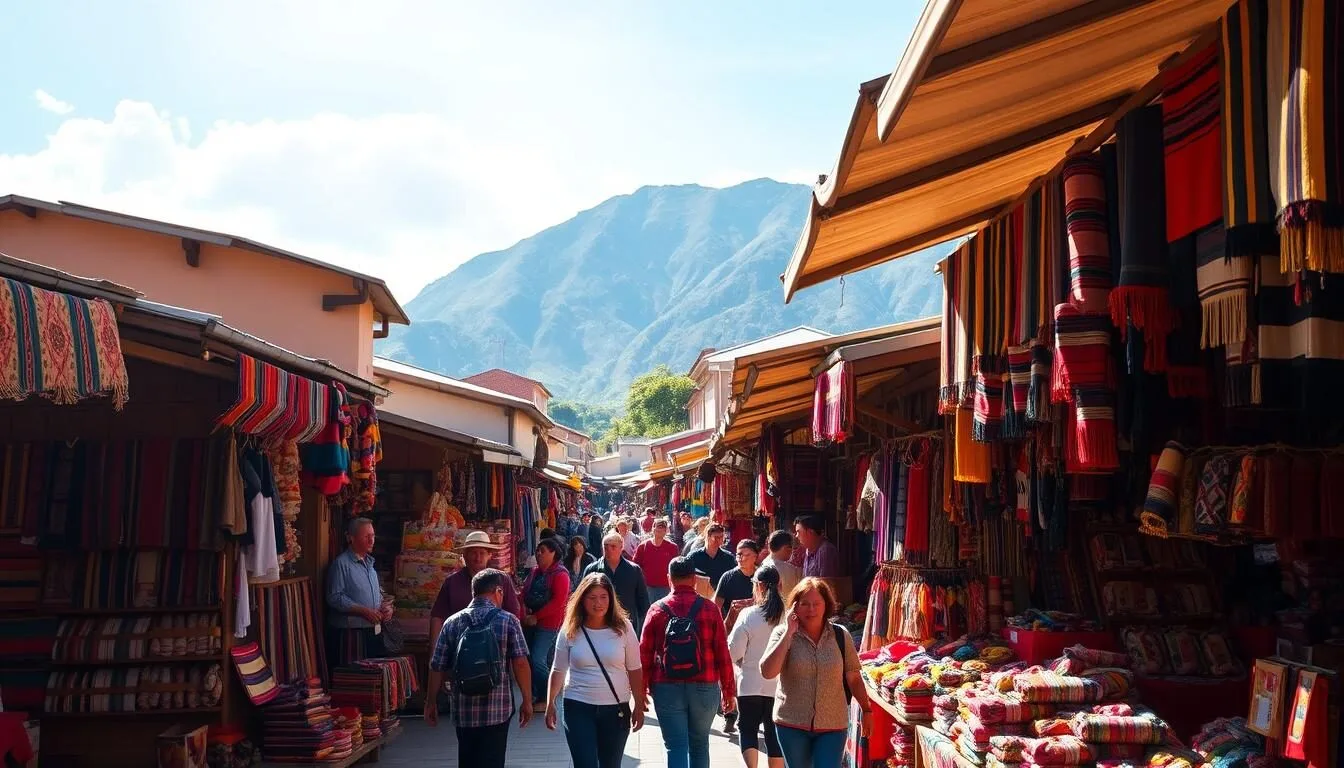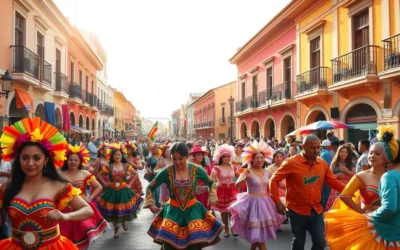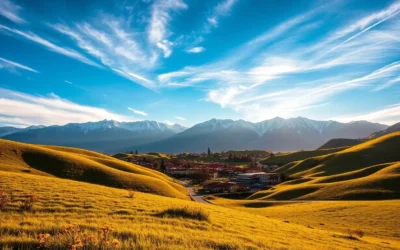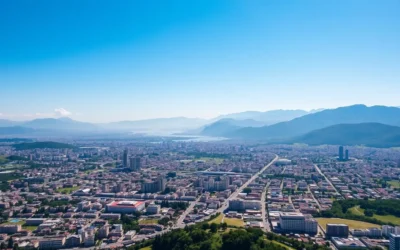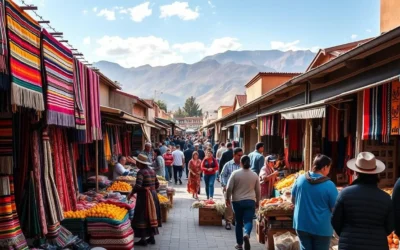Nestled in Ecuador’s northern Imbabura province, Otavalo is a vibrant indigenous town that offers more than just a glimpse into traditional Andean culture. Surrounded by stunning mountains and the majestic Imbabura volcano, this charming destination is a must-visit for any traveler.
As you journey to Otavalo, you’ll be drawn into a world of rich cultural experiences and breathtaking natural beauty. From exploring South America’s largest indigenous market to hiking around crater lakes, there’s no shortage of exciting experiences to be had. This comprehensive guide will help you navigate the top things to do in Otavalo, ensuring your visit is nothing short of unforgettable.
Discovering Otavalo: Ecuador’s Indigenous Gem
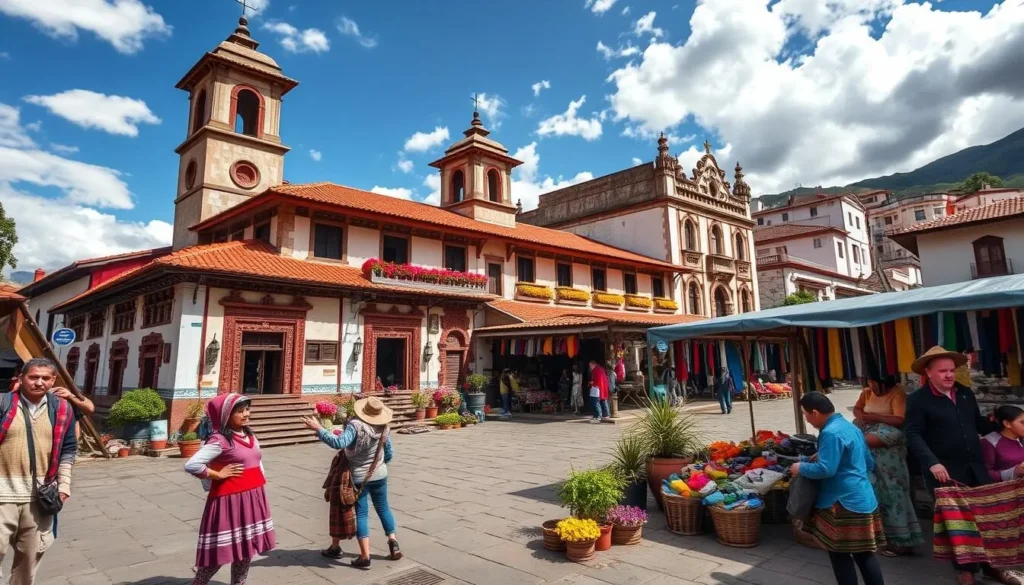
Nestled in the Andean highlands, Otavalo is a cultural treasure trove that showcases Ecuador’s rich indigenous heritage. With nearly 40,000 inhabitants, Otavalo is a town where tradition and modernity blend seamlessly. The town’s residents proudly maintain their cultural identity, with many still wearing traditional dress, distinctive hats, and men sporting their characteristic long braided hair.
The Cultural Significance of Otavalo
Otavalo stands out as one of Ecuador’s most culturally significant towns, where indigenous traditions remain vibrant and visible in everyday life. Walking through the streets of Otavalo offers a genuine cultural immersion that goes beyond the famous market, allowing you to witness authentic indigenous life in this unique Andean community.
The region around Otavalo is home to numerous indigenous villages, each with their own distinct character but sharing the proud Otavaleño cultural identity. This cultural richness, combined with the town’s picturesque setting surrounded by volcanoes and mountains, makes Otavalo a compelling destination for travelers interested in both cultural experiences and natural beauty.
- Otavalo is one of Ecuador’s most culturally significant towns, where indigenous traditions remain vibrant.
- The people of Otavalo have maintained their cultural identity, wearing traditional dress and distinctive hats.
- The community offers a genuine cultural immersion, allowing visitors to witness authentic indigenous life.
- Nested in a stunning valley, Otavalo is surrounded by volcanoes and mountains, creating a picturesque region.
- Unlike many tourist destinations, Otavalo represents a living culture where indigenous customs thrive.
- The area around Otavalo is home to numerous indigenous villages, each with their own distinct character.
- Otavalo is considered an indigenous gem and one of the most culturally rich places to visit in Ecuador.
The Famous Otavalo Market: South America’s Largest Indigenous Market
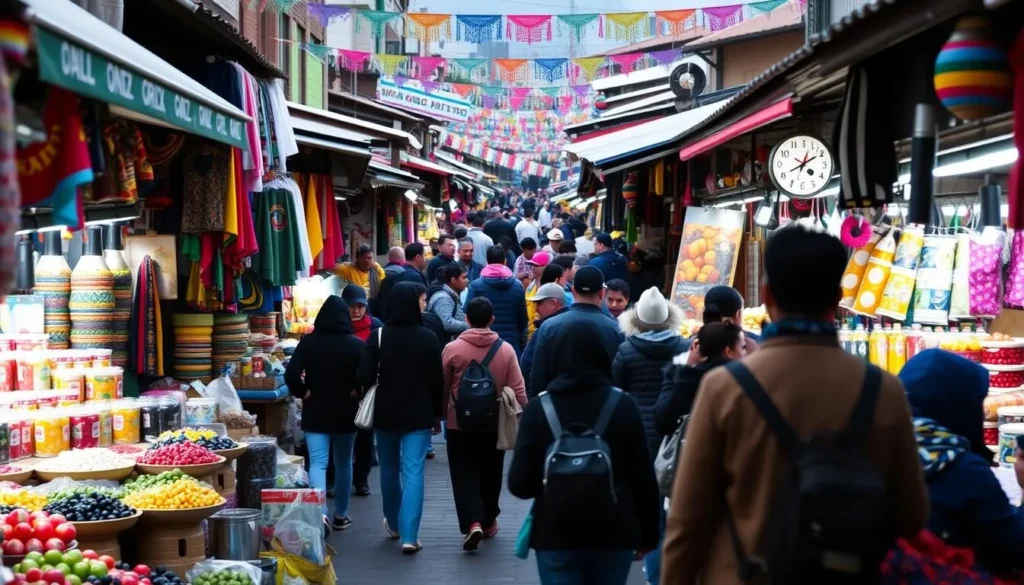
Every Saturday, the Otavalo Market transforms into a kaleidoscope of colors, sounds, and smells. As the largest indigenous market in South America, it offers a unique cultural experience that attracts tourists from around the world.
The market is open every day, but Saturday is the grand market day when hundreds of vendors set up stalls that expand beyond Plaza de Ponchos to fill much of the town center. You’ll find an impressive array of handcrafted items, including colorful textiles, ponchos, sweaters, blankets, tapestries, jewelry, musical instruments, and leather goods, all at prices that invite bargaining.
What to Buy at Plaza de Ponchos
The Otavalo Market, centered around Plaza de Ponchos, is renowned for its vibrant tapestry of colors and activity. Here, you can discover a wide range of local handicrafts, fresh produce, and traditional cuisine.
- The market represents the beating heart of the town’s tourist experience, offering a fascinating window into the region’s craftsmanship.
- Haggling is expected and part of the market experience—vendors typically start with higher prices, so don’t be afraid to negotiate, especially if purchasing multiple items.
- Beyond handicrafts, the market also features sections selling fresh produce, flowers, and food stalls where you can sample local delicacies like grilled bananas and roasted corn.
- For photographers, the market offers incredible opportunities to capture the vibrant colors, indigenous people in traditional dress, and the bustling atmosphere that makes this such a unique cultural experience.
As you explore the market, remember to be informed about the products you’re buying. While many items are handmade, some vendors might claim otherwise, so it’s essential to be aware of the market dynamics to make better purchasing decisions.
Peguche Waterfall: A Sacred Natural Wonder

Cascada Peguche, or Peguche Waterfall, is a stunning waterfall that’s steeped in local culture. This sacred site is about a 45-minute walk from the center of Otavalo, making it an easily accessible natural attraction.
Exploring the Eucalyptus Forest Trail
The journey to the waterfall takes you through a beautiful eucalyptus forest on a well-maintained path, creating a tranquil approach that builds anticipation for the main attraction. Upon arrival, you’ll find an impressive 18-meter (60-foot) falls cascading through lush vegetation.
There’s a voluntary entrance fee of $1-2, which helps maintain the trails and facilities while supporting the local community. For those willing to explore a bit more, there’s a hidden path to the right of the waterfall that leads to a small cave and another, smaller falls.
The area around the falls includes small artisan shops, picnic areas, and even swimming spots where you can take a refreshing dip in the cool mountain water. Local indigenous communities consider the waterfall a purification site, and if you visit in late June, you might witness traditional ceremonies connected to the Inti Raymi (Sun Festival) celebrations.
Laguna Cuicocha: Hiking Around the Guinea Pig Lake

Discover the breathtaking beauty of Laguna Cuicocha, a stunning crater lake nestled at the foot of Cotacachi Volcano. This natural wonder is a must-visit destination for anyone traveling to Ecuador.
The Crater Lake Loop Trail
The Crater Lake Loop Trail is a 14-kilometer loop that offers spectacular views of the lake and surrounding mountains. The hike starts above 3,000 meters and reaches a high point of 3,512 meters, requiring a moderate level of fitness and proper acclimatization to the altitude.
The trail features varying terrain and microclimates, so it’s essential to be prepared with layers, sun protection, plenty of water, and snacks. Most hikers complete the loop in 4-5 hours, but you should allow extra time for photography and enjoying the magnificent scenery.
Key Highlights of the Hike:
- Laguna Cuicocha is a breathtaking crater lake with islands in the middle, shaped like a guinea pig, hence the name “Guinea Pig Lake” in the indigenous Kichwa language.
- The complete loop trail around the crater rim spans approximately 14 kilometers and offers some of the most spectacular views in northern Ecuador.
- Starting at an elevation above 3,000 meters and reaching a high point of 3,512 meters, the hike requires a moderate level of fitness and proper acclimatization to the altitude.
- To reach Laguna Cuicocha from Otavalo, you can take a bus to Cotacachi and then a taxi to the lake entrance, or hire a taxi directly from Otavalo for the round trip.
- For those who prefer not to hike, boat tours are available on the lake, offering a different perspective of the crater and its islands.
With its stunning views and unique landscape, Laguna Cuicocha is an unforgettable hiking experience. Make sure to plan your trip accordingly and enjoy the breathtaking scenery.
San Pablo Lake: Tranquil Waters and Mountain Views
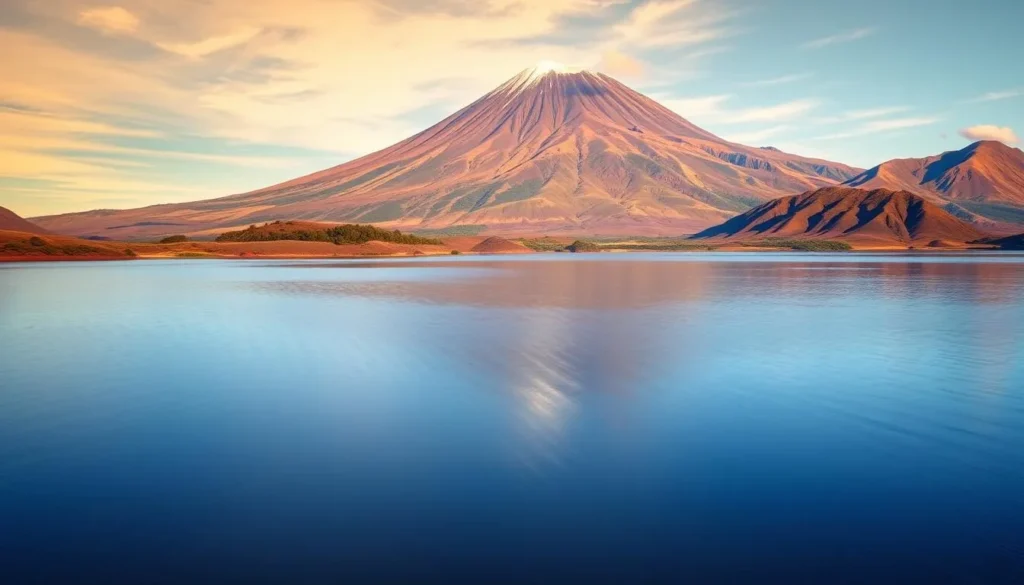
Nestled in the heart of Ecuador’s Andean region, San Pablo Lake is a must-visit for its natural beauty and cultural significance. This beautiful lake, set against the backdrop of the towering Imbabura volcano, offers a serene escape with its tranquil waters reflecting the majestic mountain landscape.
El Lechero Viewpoint
The San Pablo Lake area is dotted with scenic spots, including the El Lechero viewpoint, known for its spiritual significance and panoramic views of the lake and surrounding mountains. According to legend, the lake was formed from the tears of a heartbroken indigenous woman, while her lover became El Lechero, an ancient tree that overlooks the water.
Visitors to the area can enjoy various recreational activities, including kayaking, boat rides from the Cachiviro Otavalo Pier, and walking along scenic pathways. The combination of the lake’s pristine beauty, the towering mountains, and the rich cultural heritage makes this place one of the most photogenic and spiritually significant natural attractions in Otavalo.
Unlike more touristic spots, San Pablo Lake provides a peaceful experience where you can connect with nature and witness local life unfolding around this beautiful mountain lake. Several indigenous communities surround the lake, maintaining their traditional way of life and offering glimpses into authentic Andean culture.
Lagunas de Mojanda: High-Altitude Adventure
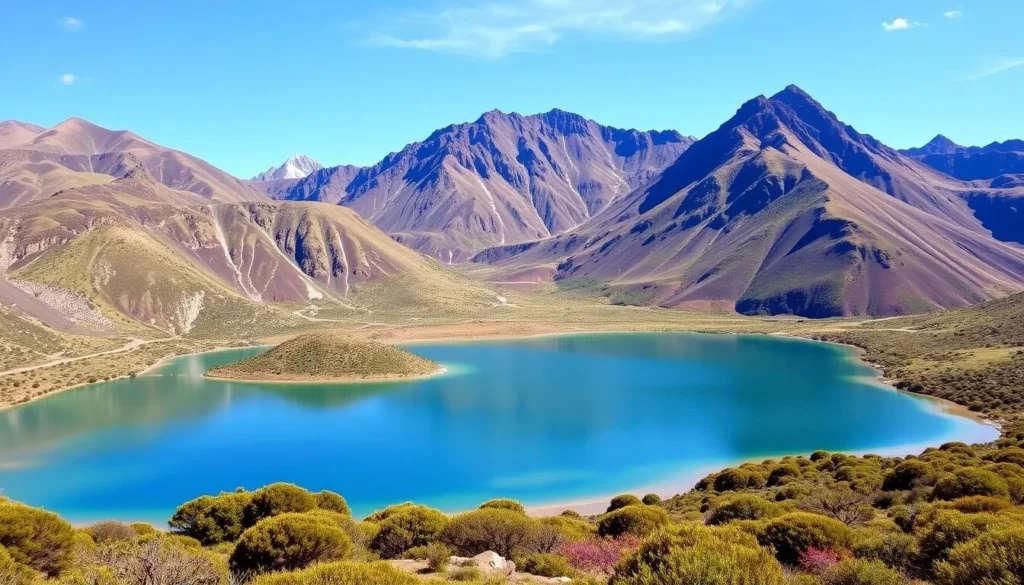
If you’re looking for an adventure, Lagunas de Mojanda is a must-visit destination near Otavalo. Located in a remote, mountainous area, it’s best reached by taxi or private car. The journey is worth it, as you’ll be rewarded with breathtaking views of three stunning high-altitude lakes – Karikucha, Yanakucha, and Warmikucha.
Nestled in the paramo ecosystem at approximately 3,700 meters (12,100 feet) above sea level, Lagunas de Mojanda creates one of the most breathtaking landscapes near Otavalo. The centerpiece of the area is the largest lake, Karikucha (also called Laguna Grande), surrounded by rolling hills covered in paramo vegetation and overlooked by the imposing Fuya Fuya Mountain that rises to 4,263 meters (13,986 feet).
Climbing Fuya Fuya Mountain
For a real adventure, consider hiking Fuya-Fuya Mountain. Climbing Fuya Fuya Mountain is a highlight for adventurous visitors, offering a challenging but rewarding 2-3 hour hike with spectacular 360-degree views of the lakes and surrounding Andean peaks on clear days.
The remote location requires transportation planning—most visitors hire a taxi or drive a private car from Otavalo (about 45 minutes on partially unpaved roads), as public transportation options are limited to this area. Whether you’re hiking, fishing, or simply having a picnic, the peaceful panoramic views make the trip truly worthwhile, creating a memorable experience at high altitude.
Weather at this altitude can change rapidly, so it’s best to start early in the morning when skies are typically clearer. The pristine environment supports unique high-altitude flora and fauna, including the iconic frailejones (large rosette plants), Andean foxes, and various bird species that thrive in this remarkable ecosystem.
Experiencing Otavaleno Culture
As you wander through the streets of Otavalo, you’ll be immersed in a rich cultural heritage that’s palpable in every aspect of daily life. The town is a hub of indigenous culture, where locals continue to practice their traditions and customs.
Traditions Alive in Otavalo
The Otavaleño people are renowned for their vibrant traditional dress, which is an integral part of their cultural identity. Men are easily recognizable by their long braided hair, white pants, ponchos, and felt hats, while women wear embroidered blouses, dark skirts, shawls, and gold bead necklaces.
Some of the ways you can experience the local culture include:
- Observing daily life in the town, where locals go about their business in traditional attire, speaking Kichwa, their native language.
- Attending local festivals like Inti Raymi, Pawkar Raymi, and Day of the Dead celebrations, which showcase the community’s rich cultural heritage.
- Visiting surrounding villages like Peguche, Iluman, or Agato, where traditional practices like weaving, shamanic healing, and agricultural techniques continue to thrive.
| Cultural Experience | Description |
|---|---|
| Traditional Dress | Men and women wear distinctive clothing that reflects their cultural heritage. |
| Local Festivals | Colorful celebrations that showcase the community’s music, dance, and traditions. |
| Surrounding Villages | Visit villages like Peguche, Iluman, or Agato to experience traditional practices firsthand. |
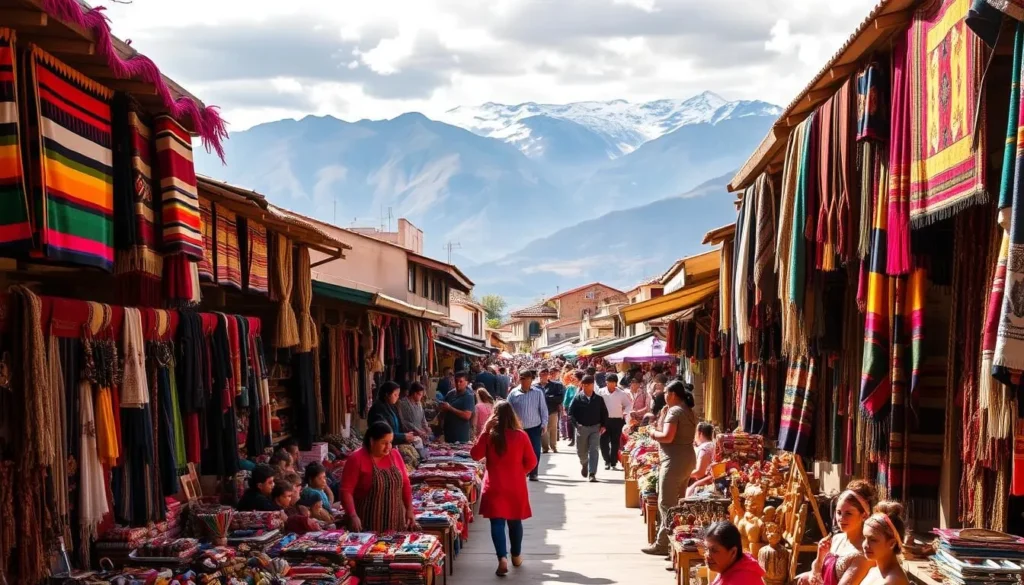
By engaging with the locals and showing respect for their traditions, you can have a meaningful cultural exchange and create lasting memories of your time in Otavalo.
Parque Condor: Ecuador’s Bird Sanctuary

Located on Pukara Alto Hill, Parque Condor is a non-profit wildlife refuge that is home to a variety of birds, including the iconic Andean condor. This sanctuary is dedicated to the conservation and rehabilitation of Ecuador’s birds of prey, providing a safe haven for these magnificent creatures.
Bird of Prey Demonstrations
The highlight of your visit to Parque Condor is the flight demonstration, typically held at 11:30 AM and 3:30 PM. Here, you can witness various birds of prey showcasing their natural hunting behaviors and impressive wingspans in free flight. Educational guides explain the ecological importance of these predators and the conservation efforts being undertaken to protect species like the Andean condor.
The park offers breathtaking panoramic views of Otavalo, San Pablo Lake, and the surrounding mountains, making it a perfect way to spend a few hours while supporting conservation efforts. With numerous species of birds, including hawks, eagles, owls, and falcons, Parque Condor is an ideal place to visit for nature lovers and those interested in wildlife conservation.
Where to Stay in Otavalo
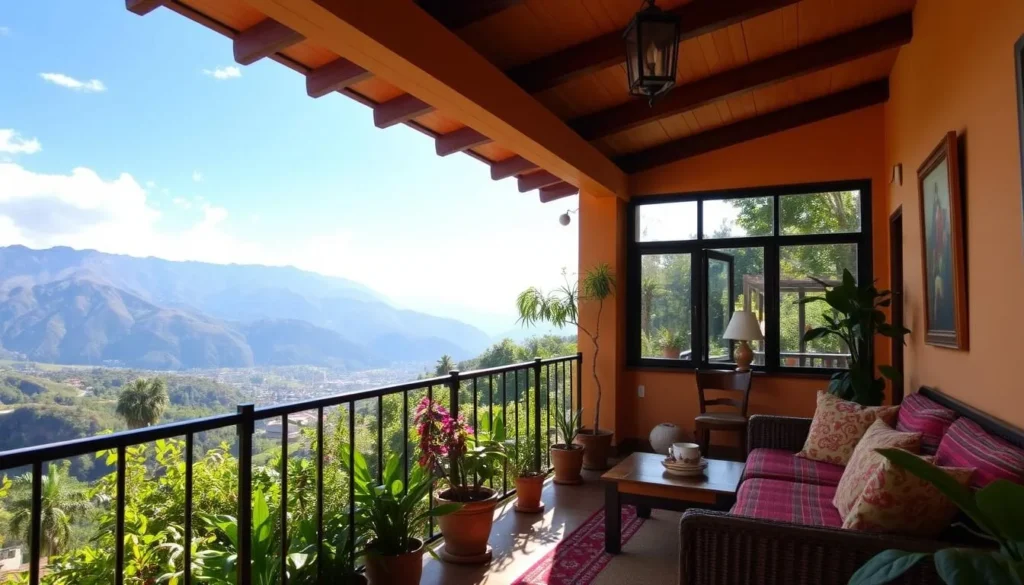
Finding the perfect place to stay in Otavalo can enhance your overall experience in this beautiful Ecuadorian town. Otavalo offers a diverse range of accommodations to suit every traveler’s needs and budget.
Accommodation Options
From luxury hotels with mountain views to affordable hostels in the town center, you can find the ideal place to stay. For a mid-range option with local character, Intiyaya Residences (La Casa Sol Andean Lodge) is highly recommended for its ethnic-style architecture and stunning views of the Andes.
Budget travelers can consider Hostal La Rosa Otavalo, which offers rooms starting at $17 per night, or The Traveler Hostel, which provides dorm beds from $9 per night and includes amenities like a shared kitchen. For a luxurious stay, Hotel El Indio Inn in the center of town or Hotel Medina del Lago on the shores of San Pablo Lake are excellent choices.
Many accommodations in Otavalo feature traditional Andean décor and locally-made textiles, enhancing your immersion in the local culture. When choosing where to stay, consider your priorities: properties in the town center offer convenience, while those on the outskirts provide tranquility and mountain views.
It’s advisable to book your accommodation in advance, especially if you’re visiting on weekends, as the market expands and the town gets busier.
How to Get to Otavalo
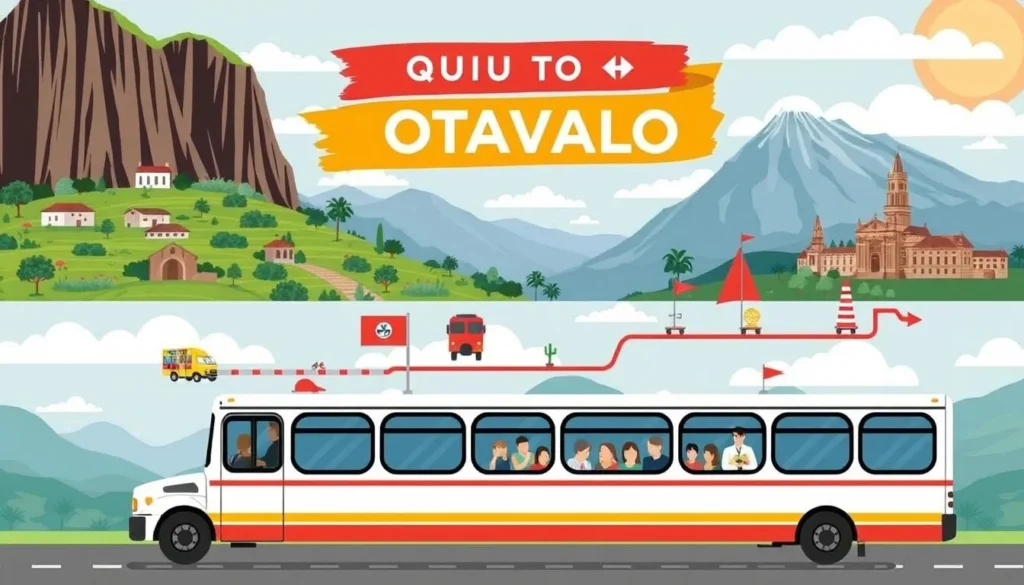
Otavalo is easily accessible by various means of transportation, making it a convenient destination for travelers exploring Ecuador’s northern highlands. Located about 95 kilometers north of Quito, Otavalo can be reached by bus, taxi, or rental car, offering flexibility for different budgets and preferences.
From Quito and Other Major Cities
For those traveling from Quito, the most economical way to reach Otavalo is by public bus from Quito’s Carcelén Terminal. Buses depart frequently every 15-20 minutes, with a journey time of approximately 2 hours, and tickets costing around $2.70-6.00. If you prefer more flexibility, renting a car allows you to explore at your own pace, with the drive from Quito to Otavalo taking about 2 hours on well-maintained roads.
Many visitors also opt for organized tours, which can be convenient if you prefer a structured day trip. Numerous tour companies offer day trips from Quito that typically include transportation, a visit to the market, and stops at nearby attractions like Cuicocha Lake.
For travelers coming from other major Ecuadorian cities like Guayaquil, long-distance buses are available with companies like Flota Imbabura. Although the journey takes approximately 8 hours and costs around $20, it’s a viable option for those on a budget.
International Travelers: If you’re arriving from outside Ecuador, you’ll first land at Mariscal Sucre International Airport in Quito. From there, you can connect to Otavalo via one of the transportation options mentioned above.
Taxis directly from Quito to Otavalo are another option, particularly suitable for groups or those with limited time. Fares typically range from $40-60 for the one-way trip, depending on your negotiation skills.
Practical Travel Tips for Visiting Otavalo
To make the most of your visit to Otavalo, it’s essential to be prepared with some insider knowledge on safety, weather, and more. Understanding these practical aspects will enhance your travel experience and ensure a memorable day in this Ecuadorian gem.
Essential Travel Tips
When traveling to Otavalo, it’s crucial to be aware of the local conditions. The city is generally considered safe, but as with any travel destination, it’s wise to remain mindful of your surroundings, especially on crowded market days.
- The best time to visit Otavalo is during the drier months from June to September for clearer skies and optimal mountain views.
- Always carry cash, as most vendors at the market do not accept credit cards, and ATMs may not always be reliable.
- Pack layers for variable weather conditions, as Otavalo’s elevation can lead to cool nights and sudden rain showers.
Otavalo’s market is a significant attraction, operating year-round. While Saturday is the main day for the market, visiting mid-week can offer a more relaxed atmosphere.
| Aspect | Tip |
|---|---|
| Safety | Be mindful of your belongings, especially on crowded market days. |
| Weather | Pack for variable conditions, including cool nights and potential rain. |
| Money | Carry cash in small denominations, as credit cards are not widely accepted. |
| Altitude | Allow a day or two to acclimatize before attempting strenuous hikes. |
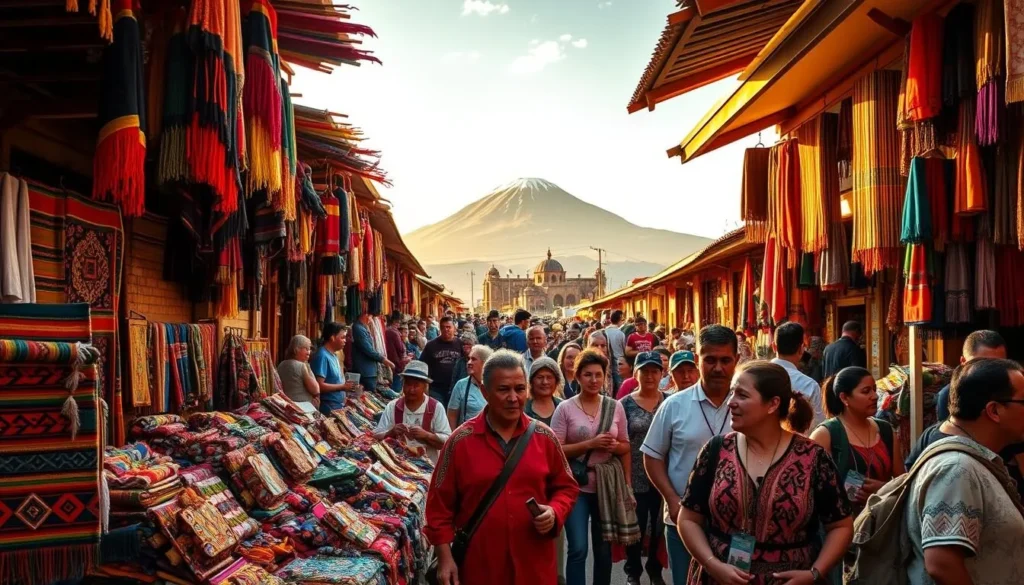
By considering these practical tips, you’ll be well-prepared for your travel to Otavalo and can enjoy the city and its surroundings to the fullest. Whether you’re exploring the market or venturing out on a hike, being informed is the best way to ensure a wonderful experience.
Conclusion: Why Otavalo Deserves More Than a Day Trip
Otavalo is a hidden gem that offers a unique blend of cultural richness and natural beauty. For us, Otavalo was absolutely worth the visit, providing the perfect escape from Quito’s hustle and bustle.
You’ll find that spending at least 2-3 days in Otavalo allows you to experience the famous market and breathtaking natural attractions surrounding this special town. A multi-day stay gives you time to venture beyond the tourist center, discover authentic cultural experiences, and hike around stunning crater lakes.
An ideal itinerary might include one day for the market and town exploration, another for Cuicocha Lake or Mojanda Lakes, and a third for visiting Peguche Waterfall and surrounding indigenous communities. By giving Otavalo the time it deserves, you’ll be rewarded with memories and insights that will last long after your trip has ended.
Creating Your Otavalo Itinerary
Whether you’re a photographer, hiker, or cultural enthusiast, Otavalo offers a range of things to see and do. By staying overnight, you can experience Otavalo at different times of day, from the early morning market setup to the beautiful Andean sunsets.
—
The above is subject to change.
Check back often to TRAVEL.COM for the latest travel tips and deals.
